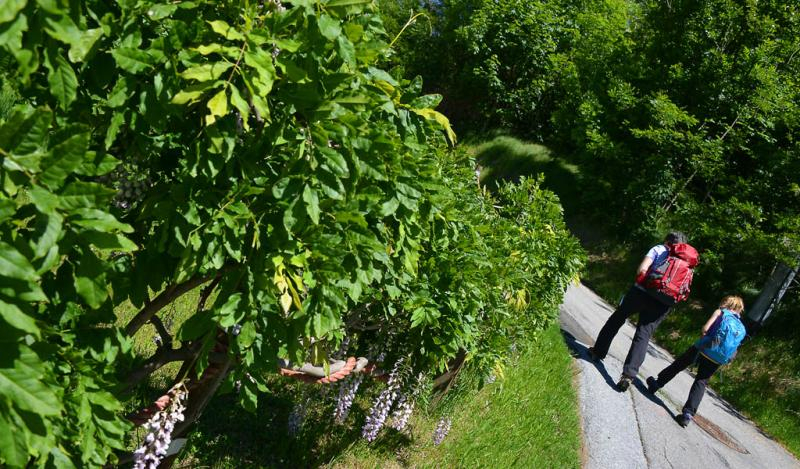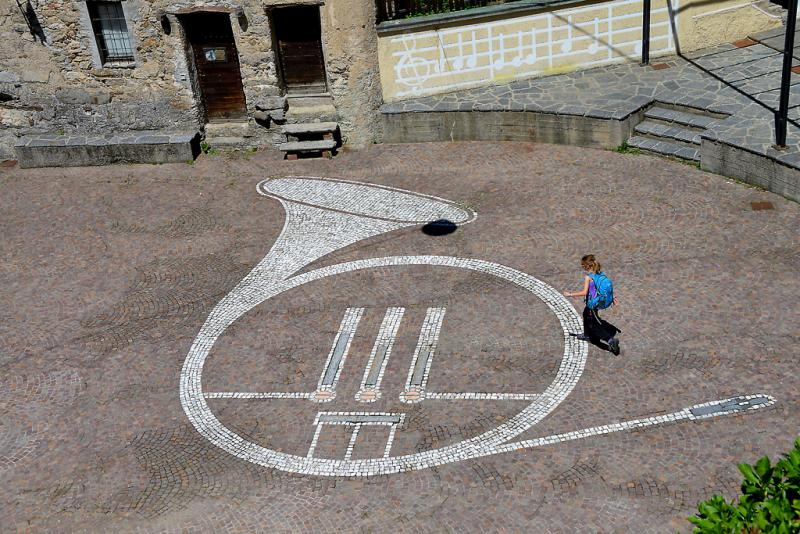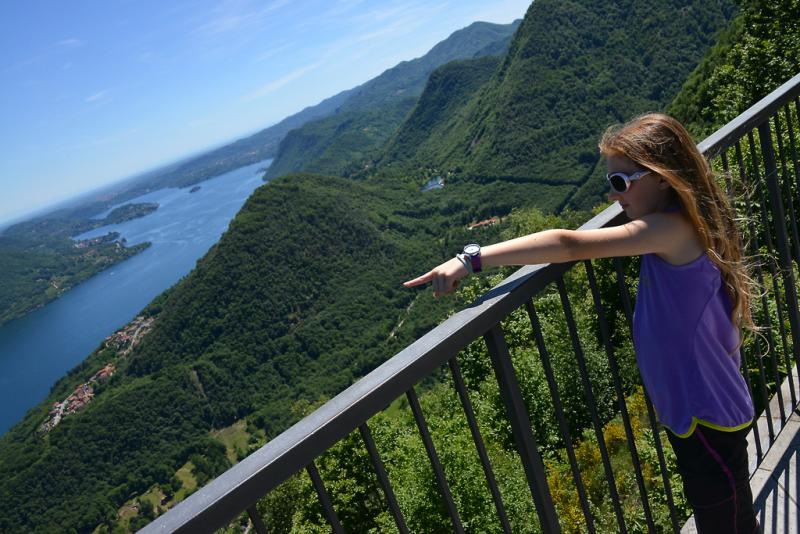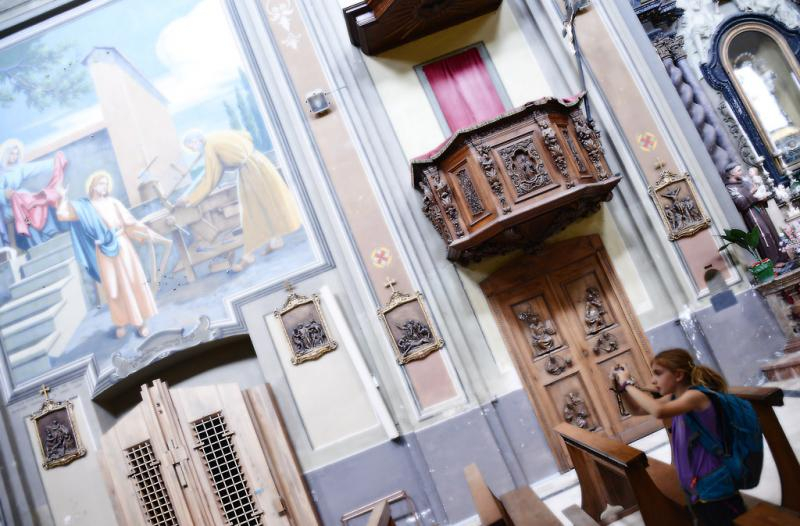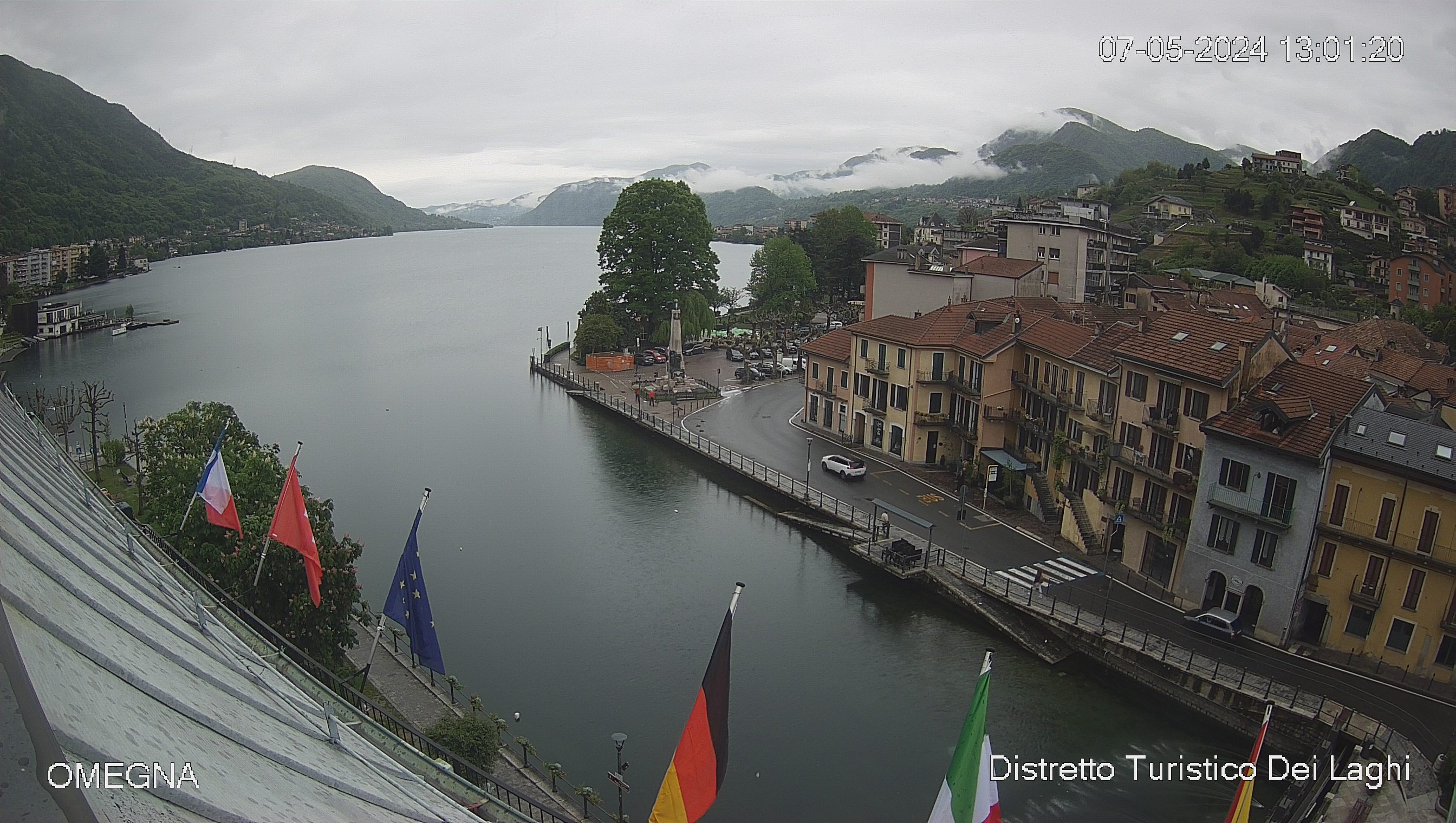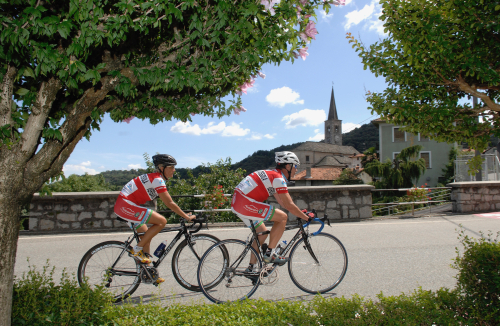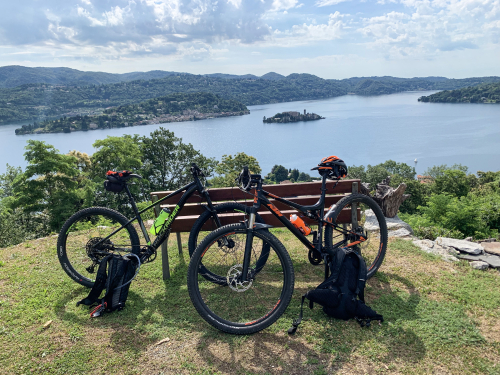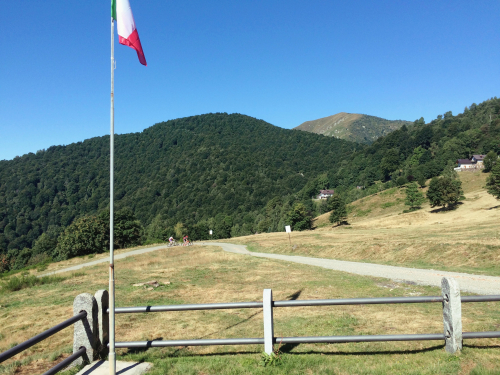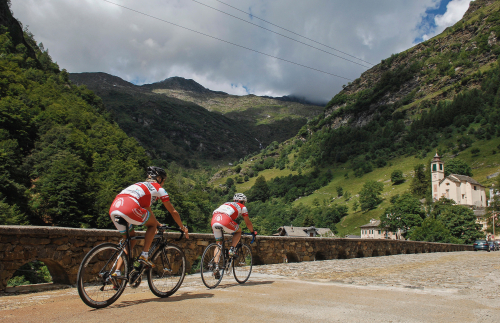PATH SLOW TREK - Circuit of Quarna
A circular path that leads to a great balcony overlooking the northern end of Lake Orta, passing by relaxing ponds, music museums and a hidden shrine on the mountain.
Departure and arrival location: Piazza Capitano Beltrami, Cireggio (380 m)
Maximum altitude: Quarna Sopra (860 m)
Difference in altitude: About 500 m
Distance: 10 km
Walking time not counting stops: 4 hours
Type of route: mixed (trail, asphalt, dirt road)
Signs: red/white road signs
Water: fountains in the towns
Recommended period: all year round
How to get there: village belonging to the city of Omegna, located about 2 km west of it. Parking is available in piazza Beltrami, near the parish church, but we suggest leaving your car in the square in front of the cemetery (400 meters to the east, along via Leonardo Da Vinci). By bus: lines Domodossola-Omegna and Novara-Borgomanero-Omegna-Domodossola (www.comazzibus.com).
Information: Distretto Turistico dei Laghi - www.distrettolaghi.it; IAT office - Piazza XXIV Aprile 17, Omegna - www.proloco.omegna.vb.it; Municipality of Omegna - www.comune.omegna.vb.it; Municipality of Nonio - www.comune.nonio.vb.it; Municipality of Quarna Sotto - www.comune.quarnasotto.vb.it; Municipality of Quarna Sopra - www.comune.quarnasopra.vb.it
the itinerary
This itinerary starts from Cireggio, a locality under the jurisdiction of Omegna where partisan commander Filippo Maria Bertrami (partisan chief (1908-1944)) was born. The hike begins in the square in front of the baroque parish church, Santa Maria Assunta. With the church façade behind us, we take Via Varallo to the left. The path is slightly downhill (follow the sign for “Ponte Bria 0h30” - "Laghetti di Nonio 0h40") and following the constant slope, you arrive at a crossroads. Take the central street (Via Varallo) and go towards the outskirts of the town until you reach the bridge, Ponte Bria. Immediately after the bridge, take a right on via Ponte Bria. The trail begins to climb very gradually and your walk will take you through a pleasant valley. A red and white sign then directs you to the left, along a stony trail that is initially parallel to the road and then climbs more precisely. Always stay on the more evident track (helpful signs are not present). When you meet a flat trail, continue on to the left and you will come to the Lakes of Nonio: two bodies of water divided by a concrete slab. Just beyond the restaurant there is a picnic area and a playground area (fountain). After the well-deserved rest break, go back to the beginning of the lake and take a cobblestone track to the left, near a large beech tree. It is not a real road but rather a water way covered with stone slabs, and you can tell by looking between the holes that can be found along the track. It is very pleasant, fresh and gradual though slightly exposed in certain places (watch livelier children carefully). A sharply climbing path to the left quickly leads to the bridge of the Brolo electrical power plant, and after crossing that bridge, you can continue on the left, initially on cobblestones and then on the staircase that goes around an old building. The climb is now quite steep on a zigzag trail, and you will come out near a small lake used for sport fishing. Continue on past the lake on an asphalt road, and turn left at the crossroads. A short uphill path will bring you to Quarna Sotto (800 m, fountain) characterized by a large square decorated with a curious musical instrument, a horn, and the 18th century church of San Nicolao.
Quarna Sotto is defined as the "land of music" because, in the first half of the 19th century, the production of woodwind instruments developed. The company “Rampone&Cazzani” became world famous, and it is still in business (www.ramponecazzani.com). The Music Museum recalls this entrepreneurial success with the presentation of old artisan techniques and an exhibition of over 300 wind instruments (visits with booking, tel. +39 (0)323.89622).
Using the front of the church façade as a reference, go to the left up Via Filippo Beltrami and pass in front of the small Music Museum featuring woodwind instruments.
Alternative: if you want to avoid the main road, even though it is not very busy, do not take Via Beltrami uphill, but instead go downhill on Salita San Giuseppe, to the left, and then take a right and go uphill on Via delle Fontane when you get to a votive pillar. When you get to a wider road, continue on the right, uphill, merging with Via Beltrami more upstream. In this way, however, if you want to see the music museum, you’ll have to go back on Via Beltrami.
Following the continuously climbing asphalt road, with a slight grade, you come to Quarna Sopra (860 m), passing in front of the Oratory of the Madonna del Pero (1598), with the parish church Saint Stephen (16th century) more on the left. After the municipal building, go on to the left (signs say "Belvedere") to arrive on Via Circonvallazione/Via Fontegno and continue to go to the left. At the next intersection, and now you are outside the town, go downhill to the right until you get to a barrier beyond which you reach Belvedere (830 m), once a location for clay pigeon shooting and today a quiet lawn with tables and a wide panoramic view of the lake, the towns lower down on the hill side (if you left you car at Cireggio cemetery parking area, you may also see it) and lakes of Nonio: it’s a breathtaking sight! Spend the right amount of time admiring the amazing view, and then go back to the larger crossroads, and go right (sings for “Santuario del Fontegno”). A nice cobblestone track takes you to the Fontegno Sanctuary complex (750 m, fountain), built in the 17th and 19th centuries. It is dedicated to Our Lady of the Snows, and is almost hidden, leaned against the mountain and sheltered by trees. It also has a splendid view. Continue past the church complex and descend on the steep track, which is partly cobblestones and partly dirt path, to reach a staircase that leads to an asphalt road. Continue to the left and you will find the church of Cireggio, whose bell tower can be seen from a great distance.
to learn more
“Quarna, un paese per la musica”
Since 1979 a musical review has been held every summer in the territory, hosting internationally acclaimed artists (www.quarnamusica.it).
Omegna
A city of crafts and industry, Omegna is known mainly for the products linked to the house and to the kitchen, such as Alessi, Piazza, Girmi, and Lagostina. The “moka express” coffee pot was invented here, and the most famous pressure cookers and pasta makers are produced here. The Forum Museum presents the history of these items (www.forumomegna.org).
tips for young hikers
This itinerary is quite long, and it ends with a descent that is challenging due to its steepness, but of great satisfaction for the panorama and the variety of environments that it goes through. Not suitable for pushchairs. Hikers with baby carrier backpacks will have no difficulty.
Slow trekkers: Franco Voglino, Annalisa Porporato and Nora Voglino
Authors of texts: Franco Voglino and Annalisa Porporato
45.87253851378, 8.3895742893219
45.87253851378, 8.3895742893219
Nearby
Discover places, experiences and activities in nearby locations
